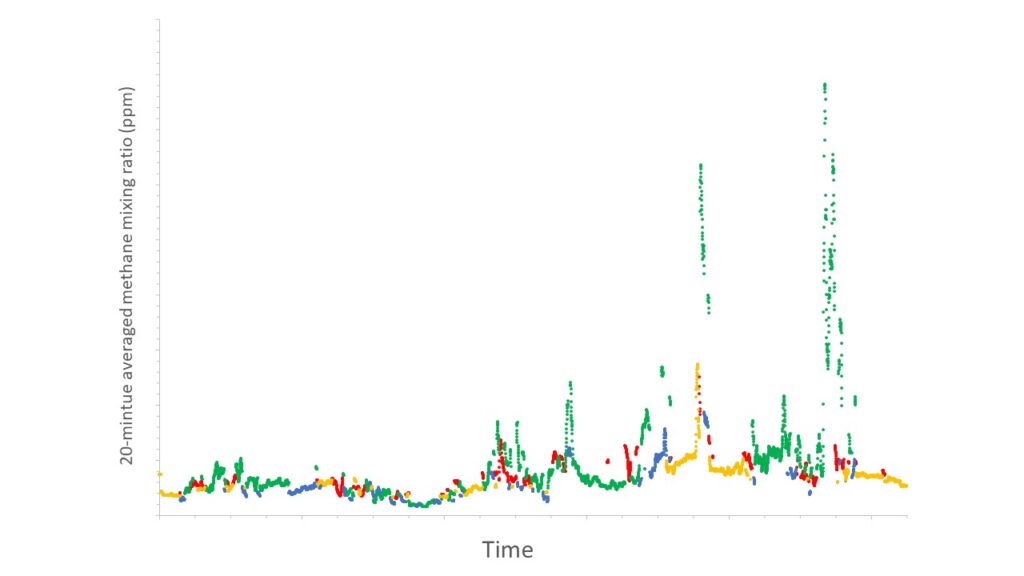Fenceline Monitors Parameters

Summary:
Loss of methane (CH4) is harmful to both the environmental and profit margins of the producer. Therefore, operators would like to minimize CH4 loss at well sites during normal operations. Continuous monitoring of air downwind of operations can be used to detect CH4 enhancements, and hence fugitive emissions. Fenceline monitoring uses multiple instruments fixed at the boundary of oil and gas operations to continuously measure gas concentrations. Currently, there are no defined fenceline guidelines for observing CH4 emissions from oil and gas operations.
Recently, fenceline monitoring has become more feasible as several low-cost sensing units have been used to measure CH4 concentrations. Inexpensive ($10) metal oxide sensors have been tested and shown to be able to reliably measure near-ambient (2 – 8 ppm) concentrations of CH4. Even though these sensors have shown some utility in long-term measurement, they are prone to drifting over time and each sensor requires routine calibration against a high-precision CH4 analyzer.
Even though technology has become available, it is still unclear how well a fenceline system can detect methane enhancements and how quickly a fenceline system can report a leak after it has started. Emissions from a point source, like we might expect a leak from a piece of equipment on a well pad to appear, will be affected by the meteorology and micrometeorology and the likelihood of detection will depend on these conditions. If a leak occurs directly downwind of a sensor during a constant wind, we might reasonably expect it to be detected very quickly. However, in a changeable wind it is likely that enhancements in the gas plume will not be detected.
Objectives:
In this study we investigate how meteorology and micrometeorology affects the ability of fenceline monitors to detect a leak. Using point sources of known emission rates, our aims are to investigate:
- If observing CH4 enhancements downwind of a leak can be used to detect single, point source emissions of the size normally seen from oil and gas wells.
- How meteorology and micrometeorology affect downwind enhancements.
- If a real-time fenceline measurement data can be used to generate realistic emission estimates.

Opportunities to Participate:
Interested in participating or would like any further information? Contact Stuart.Riddick@colostate.edu.
Funding Provided by:
METEC Industrial Advisory Board
